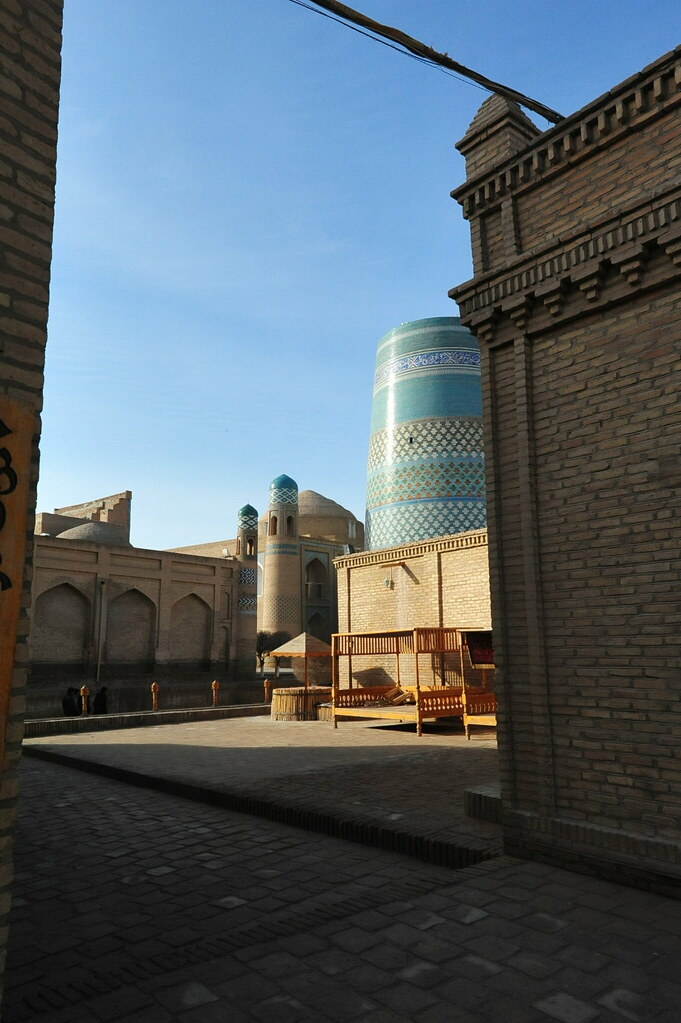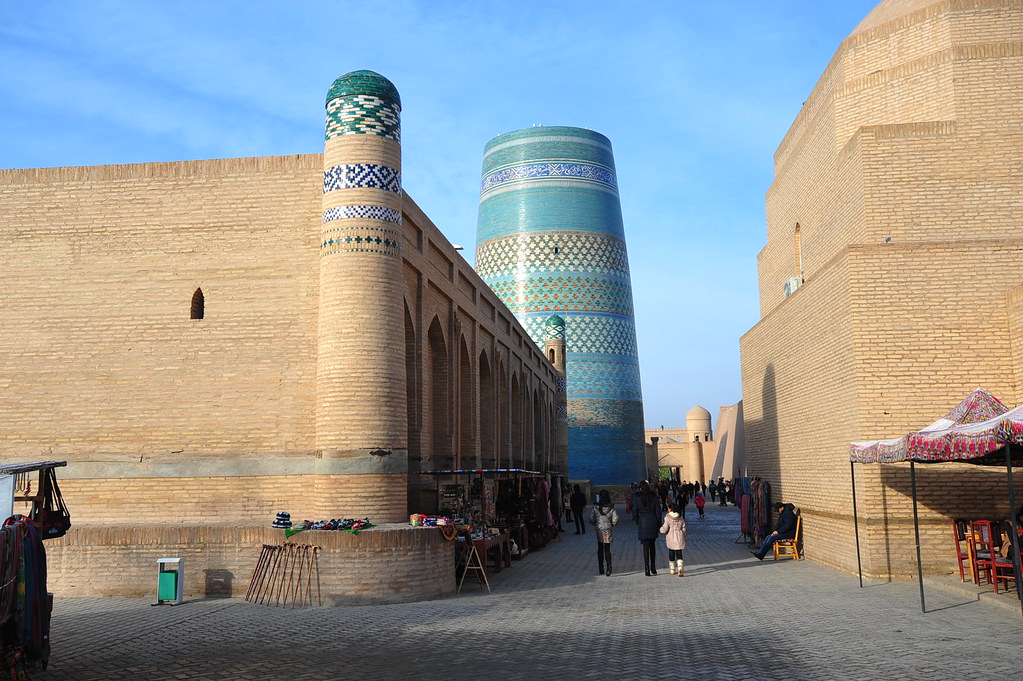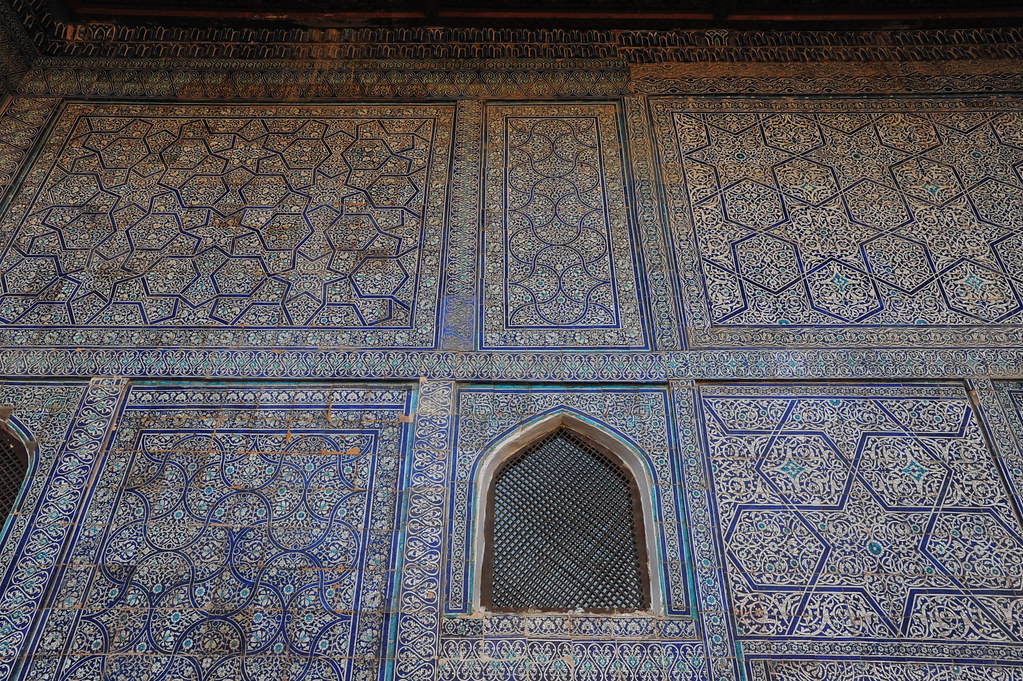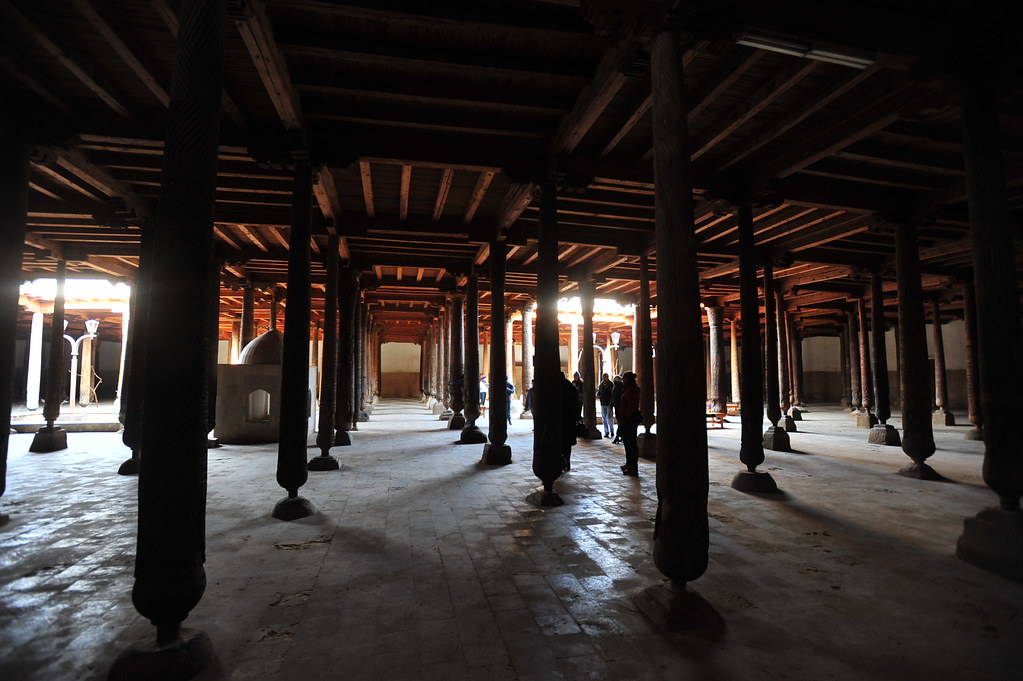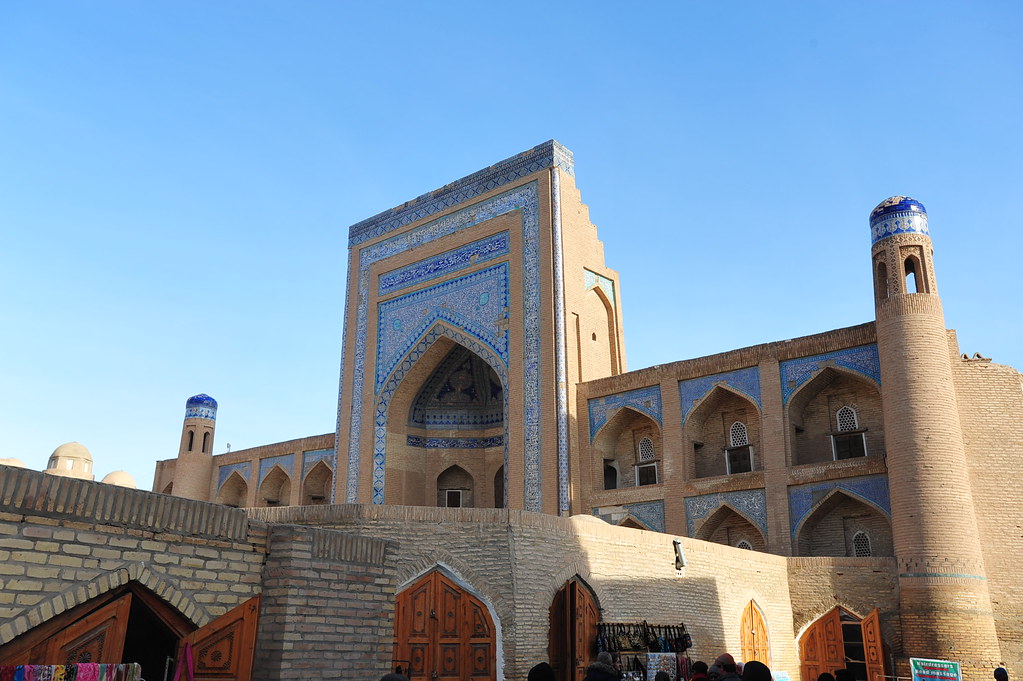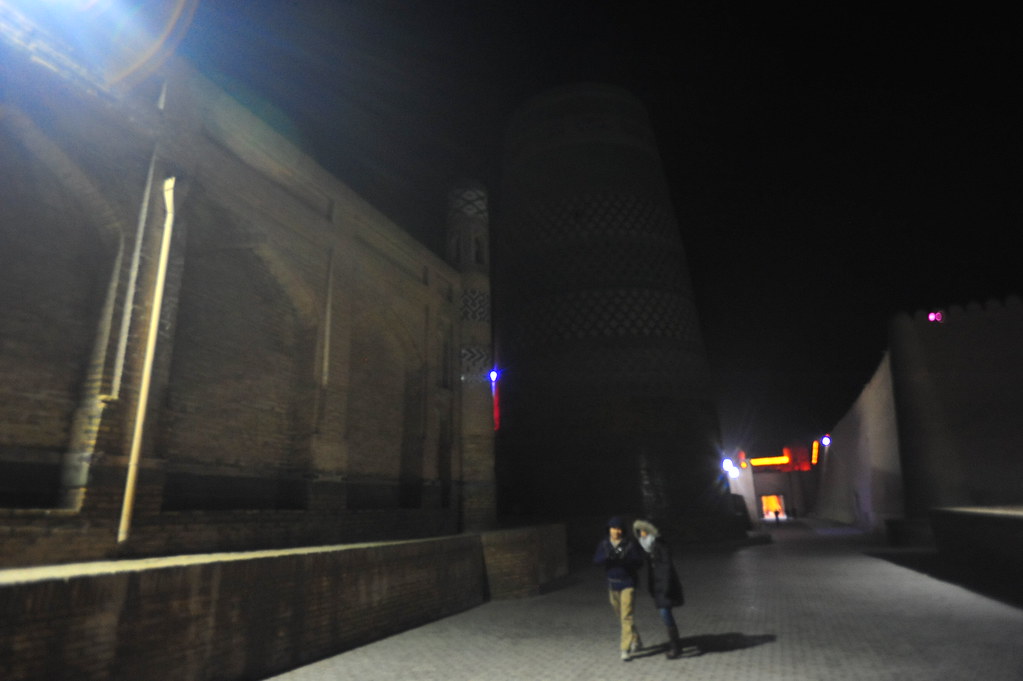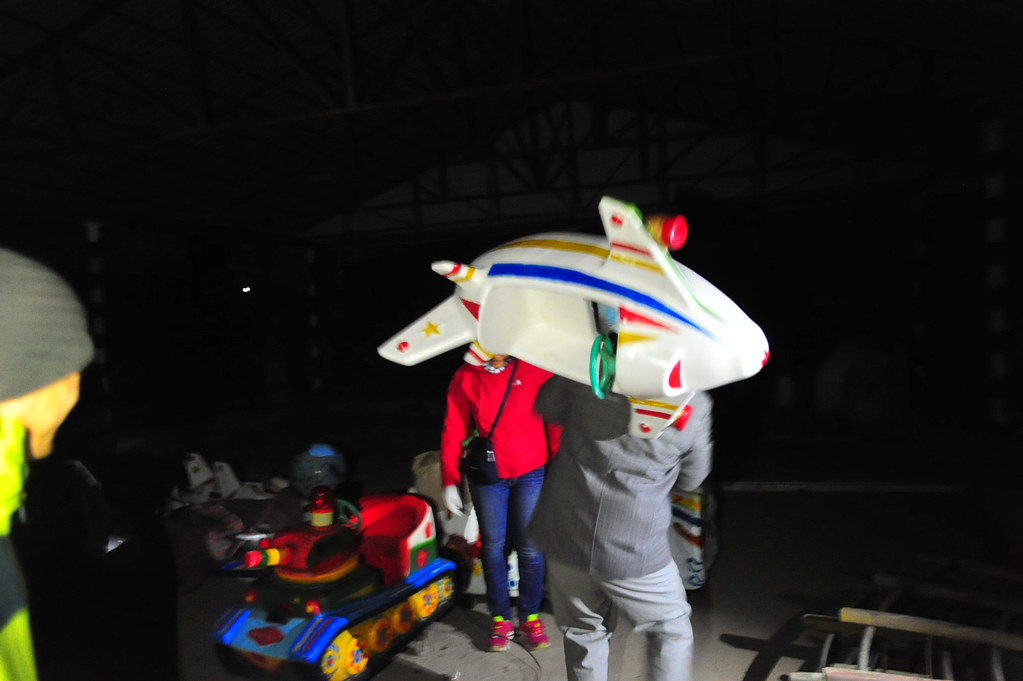The next morning the group got up at a horrific 4am in the morning for a 5am bus ride to the airport.
We embarked on a 7am flight to Urgench, capital of the Khorazem region. Urgench has been regarded as a missable stopover city a stone’s throw away from Khiva, one of the three great epicenters of the Silk Road (Samarkand and Bukhara among the other two).
After landing at 9am, we drove 30 minutes to Khiva, 35km south from Urgench and right across the border from Turkmenistan.
You’ll know that you’ve arrived once you see the old yet incredibly well preserved Persian-built fortress walls, with nary another tourist in sight.
During the time of the Silk Road, Khiva’s name had been synonymous with the caravans of a brutal, systematic slave trade that kept the city profitable. Along with the constant threat of marauding raiders of the desert, Khiva was a destination only for the most determined, ruthless traders.
Hundreds of years later, after the rise of fall of many kingdoms, empires, and regimes that remarkably spared this city (unlike its more well-known cousins), it has become the most well-preserved medieval city of the Islamic world.
It is also the birthplace of prominent mathematicians that ruined our high school experience, including Muḥammad ibn Mūsā al-Khwārizmī (latin name: Algoritmi…sound familiar?), aka the father of modern algebra and the concept of algorithms.
Approach the old city from the west side and relish your first glimpse of Ichon-Qala (the inner walled city).
Pay the 5,000 som photographer’s fee (essentially an admission ticket good for 2 days), and you’re ready to travel back through time:
On your right is the 19th century Mohammed Amin Khan Medressa, now converted into Hotel Orient Star, open from March to November.
The stumpy, yet beautiful turquoise structure beside the Medressa is Kalta Minor Minaret, which was only half-finished (and destined to forever be so) after the ruler at the time, Mohammed Amin Khan, died suddenly.
Keep walking east past the Kaltor Minor Minaret and on your left is an entranceway to a courtyard where you can see the Mohammed Rakhim Khan Medressa to the east and Kuhna Ark to the west.
In front of Kuhna Ark is a still functioning well hundreds of years old. Today babushkas are still pulling up buckets of water from here.
You’re welcome to a free taste of salty well water at its most genuine.
Within the Kuhna Ark, known as the inner fortress and residence of Khiva’s former rulers, you can find a few museums, mosques, jail cell, and reception area (ie the Summer Mosque) for guests, all ornately decorated with such detail similar to what can be found in Esfahan.
Hanging out on the south wall of Mohammed Rakhim Khan’s Medressa is Khiva’s mascot camel, Katya. Obviously for a few thousand soms, you can take photos with Katya, or ride her on her back, if she lets you.
Even during the frigid temperatures of the winter season locals are getting hitched here.
Stop by at a traditional local house for lunch and have some genuine Khorezm food:
Walk through the oldest street in the city:
Then head inside Juma Mosque, built to resemble the Arabian mosques of ancient times with its 218 wooden columns supporting its structure. 6-7 of these columns date as far back as the 10th century and can be told apart by their relatively wider and larger size (obviously, wood grows over time…?).
Those of you who have been to La Mezquita in Cordoba, Spain may recognize some similarities.
At this point you might get medressa’ed out, unable to tell the difference between any of them like your humble author here (I’m just giving up right now):
Head south from Juma Mosque to check out the mausoleum of Khiva’s patron saint Pahlavon Mahmud.
About 3/4 east through the old city, you’ll come upon Islom-Hoja and its newer, taller minaret (Uzbekistan’s highest at 57m), completed in 1910.
For 5000 extra soms (or 4000 if you come in with a group as large as ours), give your glutes a workout and climb up to the top for panroramic views of Khiva:
Then through the eastern gate, where slaves used to be transported, held and traded, you’ll come across the bazaar and some great Persian street meat/kebabs for 2,000 soms.
After you got your fill of the bazaar, head back out and walk back through the city at dusk.
After the shops close up, the family cars drive out, and the touts go home, head back into the old city at night. Except an occasional car to interrupt your suspension of disbelief, you can’t help but feel like you’ve actually stepped back in time to see what streets here were like during the heyday of the Silk Road.
Our group kept pushing forward where we stumbled upon an abandoned amusement park from the 70s. We couldn’t help but raid the fairgrounds, playing suitably creepy music in the background:
Some of us climbed over the gates of a decommissioned bumper car ride and mixed mischief with a healthy dose of nostalgia.
We promise we didn’t break anything and left things back as nice as how we found them.
![]()
- At time of posting in Khiva, Uzbekistan, it was -1 °C - Humidity: 30% | Wind Speed: 2km/hr | Cloud Cover: clear




